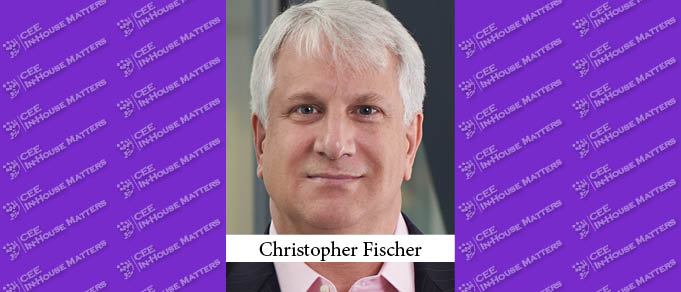Christopher Fischer, Vice President Legal Affairs at Paysafecard.com, talks to CEE In-House Matters about digitalization in his company.
CEEIHM: Digitalization has been a buzzword in legal spheres for a while now. What does it mean to you?
Christopher: So many buzzwords and yes, digitalization is an important topic for us as well. In the end, for me, it comes down to improving efficiency. The earliest forms of digitalization were reusable digital files and the fax machine. More recently a big focus has been on online research. And with the COVID-19 pandemic, digitalization has evolved into online collaboration. For instance, we had multiple teams collaborate on a regulatory risk assessment document simultaneously via Microsoft Teams.
CEEIHM: What do you see as the main driving forces for the digitalization of the legal function?
Christopher: From an accounting perspective, legal departments are typically seen as just a cost center. Companies are focused on maintaining costs while growing revenues. That means we are often asked to do more with the same number of lawyers. The best way to manage that is to increase efficiency and, to that end, digital tools are a good investment.
CEEIHM: Building on the above, what aspect/kind of digitalization are you looking to incorporate in the future?
Christopher: In the near future, we are looking to consolidate our document storage into a single cloud-based solution. After that, we plan to evolve to include document management solutions that will allow our clients more flexibility in creating contracts themselves from templates that we manage in the system.
CEEIHM: What are the main challenges you foresee in achieving this, and how are you thinking of overcoming them?
Christopher: The saying goes that you can lead a horse to water, but you can’t make it drink. As with most IT implementations, getting everyone to learn and use a new system while dealing with a thousand other things at the same time is a challenge. So we have created an implementation team with members from across the broader legal department to understand our needs. We have also engaged a consultant to help us manage the process. I am also planning on dedicating some time for my team and me just to play with the software, together with the consultant.
CEEIHM: In relative terms, would you assess lawyers as a tech-savvy or not? What can a GC do to create the necessary skills and know-how within the team to fully engage in projects like the ones you mentioned?
Christopher: For me, people are people. Some have a greater affinity for technology and some less. As a group, I would assess lawyers as being less tech-savvy than most. That being said, technology is an unavoidable part of our daily lives. Thankfully, software creators also focus on UX, the user experience, which makes using software relatively easy. With support and repeated use, I feel confident that my team will come to love the new solution.
CEEIHM: Do you prefer using external IT solutions or develop them internally?
Christopher: Technology advances so quickly that I wouldn’t even consider an internal solution. In my experience, it is best to choose a solution with plug-and-play connectivity to other applications, such as Salesforce. In the future, I expect we will use a solution that integrates our collaboration with outside counsel and even our legal invoicing system. An internal solution could never keep pace with the rapidly changing environment.
CEEIHM: What are the main elements you’d use to assess the different vendors/solutions?
Christopher: Certainly, benefit-per-dollar is a major element. But in the end, the solution itself is what sells the product. The ease of use, integration with other software solutions, and the ability to collaborate across organizations are key winning attributes. A high level of AI is now a standard prerequisite. Finally, the track record of the supplier and the likelihood of sustained future support needs to be evaluated.
CEEIHM: In many instances, these kinds of digitalization efforts come with a hefty initial price tag. How do you, as a GC, build an internal case for such a project?
Christopher: We did not receive a blank cheque for digitalization. It helps when the overall organization is focused on increased and improved digitalization. But the USP for the internal case is that digitalization won’t merely benefit the legal department, but will benefit the organization as a whole. The repository function is likely to eliminate the need for some of the other document-storage solutions. The collaboration functionality will empower sales and marketing functions. An investment needs to be looked at from all angles as it can include benefits that go beyond what is initially obvious and can support the organization in many ways.
By Djordje Vesic
This article was published in issue 1.3 of CEE In-House Matters. The full edition is available here in pdf format, here in e-reader format, and here in electronic format.


